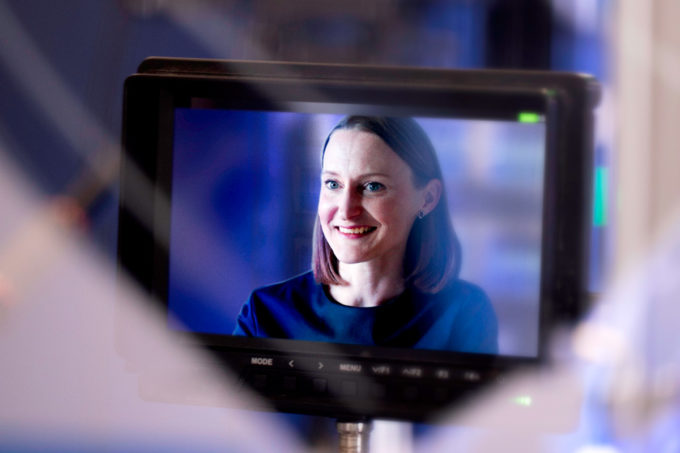Success factors for modern B2B communication at Wöhner GmbH & Ko. KG
 B2B corporate communication has its very own rules and challenges. Our customer Wöhner GmbH & Co. KG has a Head of Corporate Communications & Marketing in Isabel Ossenberg who goes her very own way in this area – and not just since Corona shuffled the established communication channels.
B2B corporate communication has its very own rules and challenges. Our customer Wöhner GmbH & Co. KG has a Head of Corporate Communications & Marketing in Isabel Ossenberg who goes her very own way in this area – and not just since Corona shuffled the established communication channels.
In this interview, Isabel tells us what she considers to be the most important success factors in modern B2B communication.
Connect with Isabel Ossenberg and Stefanie Soehnchen on LinkedIn.
Isabel, it’s still rather rare for communications and marketing to be the same department. Why does that make sense?
“To be honest, I’ve never really been able to understand the separation. But ultimately, it’s a matter of definition. For me, marketing is part of corporate communications and thus part of a holistic approach. Modern B2B corporate communications includes the entire repertoire of current options – from classic PR to offline and online marketing. Content marketing and sales-supporting product communication included. If you don’t approach brand and company positioning in this way, you simply leave great potential lying around, may reach fewer target groups and then additionally fail to pick them up where they are to be found.”
How is this holistic approach different from what has been done before in B2B communications?
“Especially before Corona, the most important occasions, outlets, and touchpoints for us were the trade shows. Almost all of our content planning revolved around the important trade shows.
With Corona, these have been eliminated or shifted to digital, which has given us an enormous innovation boost in our way of communicating.
Digitization and automation have been part of Wöhner’s life for decades – it’s an integral part of our DNA and it drives us internally in our culture and product development.
This attitude has helped us to further sharpen our communication vision for digital communication as well and to build an extended positioning along the customer journey.
Here’s an example: In addition to presenting at a trade show booth and putting it in a press release, we have now built entire campaigns around the event, linking online & offline ads and also taking social media into account.
And what has remained the same compared to before?
“What continues to be very important is the cross-departmental collaboration between different stakeholders in terms of content. We have representatives from sales sitting together with product developers and my team, and management is also involved.
This ensures that we don’t think in silos and meet customers at eye level. Even on topics that our target group may not have been aware of before. Without this collaboration, B2B communication cannot be successful.
This 360° view of target group needs is another aspect that remains unchanged. We ask ourselves: What does the target group want? How do they want it?
And this then relates to time-honored formats such as our manual – a comprehensive, physical product handbook.
Here we know that stakeholders often don’t have an office or computer workstation and therefore value and actively use this physical work tool. For us, innovation is about taking our customers with us, not leaving them behind.
How do you decide where new approaches are necessary and make sense?
“Basically, we see that the world of communication is changing and that we want to and have to keep up with it in B2B communication.
However, our credo in further development is: copying what is happening in the market and in our industry is not an option. We therefore also look at communication aesthetics and trends in other industries, such as the automotive or communications technology sector.
Inspired in this way, we then design something in which the brand is the tact. Our values and brand attributes have to be clearly noticeable to us.
For virtual product launches, for example, we produced videos at great expense and marketed them further in a digital campaign that also included infotainment elements.
Where do you think B2B communication is headed next?
“I firmly believe that B2B communication will become even more digital.
There will be an increasing focus on digital information formats such as UX-optimized newsletters or webinars available on demand.
Additionally, I think acting more strategically in the international context of brands and markets with clear goals in the digital space will become increasingly important.”
Thank you, Isabel, for these insights.
For business-relevant communication content like this, why not sign up for our newsletter “FleishmanHillard Quarterly”, follow FleishmanHillard Germany on LinkedIn or Twitter, get to know our team on Instagram or visit our YouTube channel.
Find Out More
-
Why we tell the truth
May 23, 2022


